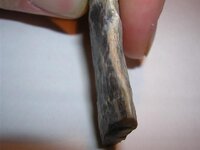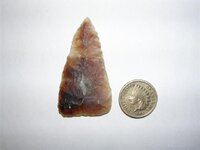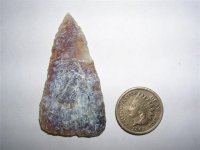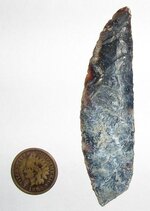scepter1
Sr. Member
This agate arrowhead / scraper (?) was found on a saltwater beach (Puget Sound, Washington). You can see that it is covered with a white patina.
My question is how to date arrowheads/tools such as this: How much time does it take to develop a white patina like this example? Obviously the actual chemical composition and the minerals it has been exposed to play a big part, but what does that mean time-wise? Anyone have any information / knowledge as to the aging process in order to rough guess age?
Also, I've noticed that this type of white patina seems to happen primarily to agates, and the rest of the beach stones do not have a patina like this...
Thanks, Rich.
My question is how to date arrowheads/tools such as this: How much time does it take to develop a white patina like this example? Obviously the actual chemical composition and the minerals it has been exposed to play a big part, but what does that mean time-wise? Anyone have any information / knowledge as to the aging process in order to rough guess age?
Also, I've noticed that this type of white patina seems to happen primarily to agates, and the rest of the beach stones do not have a patina like this...
Thanks, Rich.
Attachments
Upvote
0












